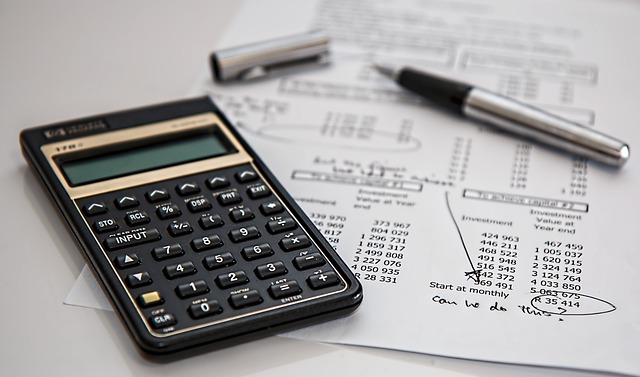I’ve been thinking about what my first post, having returned to the investing world, should be. With a gentle nudge from Simon (x/BrilliantLeader) I thought it might be fun/terrifying to take a look at the performance of those equities I last held prior to selling my entire portfolio in late 2018. A portfolio retrospective, if you will. Those unfamiliar with me and my investment history can take a look at my previous post, Back…After SIX Years here for some context. What would my performance and results have been had I carried on? Dare I investigate?
DISCLAIMER: This post should be taken with the very finest, saltiest Salt Bae pinch of salt. A gigantic number of assumptions and simplifications have been made.

Let’s start with some background. I started investing in August of 2015, with relatively small sums, but all equally distributed across an initial 15 or so investments. I was fully, or nearly fully invested for three years, selling the remainder of my holdings in late 2018 (sadly not by choice). In those three years I bought and sold in and out of equities, primarily in the UK, Europe and United States, a handful of times. But I am, I would argue, a buy and hold, long-term investor in mindset. Trading is not for me, and these were not short term trading decisions.
The Portfolio
Below are the equities I held towards the end of 2018. First bit of good news, all bar one are still trading on their old ticker. The other one changed its trading name but still operates. So far, so good!
| AB Dynamics (ABDP) | Advanced Medical Solutions (AMS) | Apple (AAPL) |
| Avon Technologies (AVON) | Berkeley Group (BKG) | Creightons (CRL) |
| Diploma (DPLM) | Gilead Sciences (GILD) | Howdens (HWDN) |
| Next (NXT) | Persimmon (PSN) | Playtech (PLAY) |
| Somero Enterprises (SOM) | Taptica (Now Nexxen: NEXN) |
At the time of writing (19:45pm on Tuesday 13th August 2024), had I sold today, ten of the fourteen holdings would have generated a positive return on my initial investment in them. The biggest overall increase was 718%, the biggest decrease, -37%. One thing is clear, when people talk about a few big winners contributing to the bulk of returns, be that equity portfolios, indices or funds, they absolutely ain’t kidding. Four holdings generated in excess of a 250% return, doing much of the heavy lifting to offset those stragglers, and those losers.
I must also draw attention to two things. Firstly, these calculations do not include any dividends paid during these periods, which would have increased the return. Secondly, that I missed the 26% decrease in the FTSE All-Share index in early 2020. Would I have had the confidence to stick through it? I’d like to think so, because there is a reasonably strict methodology in my process. In reality, would I have panicked like so many others? It’s entirely possible. Grab another pinch of that salt, will ya?
What This Means
Not every long term holding necessarily has to be a big winner. We aren’t looking for a 100% success rate in finding superstars. Heck, we aren’t even looking for a 100% success rate full stop. But if we can find a few, those precious few, we might just do ok. Now, as I said earlier, we’re making massive assumptions here. I didn’t buy all of these companies at the same time, therefore I’ve tried to be as accurate as possible in calculating returns based off of each individual holding. I should also add that in the nine years since I started, there’s no guarantee my portfolio today would have looked exactly the same as the above fourteen holdings. In fact, I can practically guarantee it wouldn’t.
Buy and hold, or long-term investing, does not mean at any cost. I have sold holdings before for a number of reasons, but the primary one is that my opinion on the outlook of the company has changed. As the old (misattributed) Keynes quote goes:
“When the facts change, I change my mind.”
Poor annual results, difficulty with the company or a change in appraised valuation can all contribute to a decision to sell. And let’s not forget, you may well find a better place to put your money. Like I say, buy and hold does not necessarily mean the same equities for eternity, and research is an ongoing process. That being said, Warren Buffett has in the past advised that if people aren’t prepared to hold something for ten years, they shouldn’t hold it for ten minutes. This is the mentality I try to take when making an investment decision.
The Returns
But where was I. Ah yes, the returns. Let me summarise thus:
| Company | Purchase Date | Gain/Loss % | CAGR % |
| ABDP | 31/08/16 | 305% | 19.00% |
| AMS | 31/08/16 | 9% | 1.06% |
| AAPL | 31/08/16 | 718% | 30.40% |
| AVON | 27/07/17 | 25% | 3.29% |
| BKG | 04/08/15 | 39% | 3.74% |
| CRL | 04/08/15 | 271% | 15.70% |
| DPLM | 04/08/15 | 472% | 21.37% |
| GILD | 31/08/16 | -7% | -0.88% |
| HWDN | 04/08/15 | 83% | 6.92% |
| NXT | 04/08/15 | 21% | 2.44% |
| PSN | 04/08/15 | -24% | -2.98% |
| PLAY | 04/08/15 | -37% | -5.00% |
| SOM | 28/02/17 | 18% | 2.37% |
| NEXN | 30/04/18 | -21% | -3.82% |
I took the price at the date of purchase for each company and calculated the overall (col. 3) and compound annual return (col. 4) for each based on today’s price.
Anyone who used to follow my work (if they can think back that far), may remember that my benchmark was always the FTSE All-Share Index. I figured if I couldn’t beat the index, I was better off investing in an index fund/ETF and letting someone else do the work (but let’s be honest, where’s the fun in that?)
So what have I learned from this exercise? Firstly, it was positive. Arguably, very positive. And it was fun, most of all. Total growth in the above portfolio in these past nine years was a healthy 133.68% gain, a more than doubling of my initial investment. But did I beat my benchmark?
| Instrument | Compound Annual Growth Rate (%) |
| Chriss’s Equity Portfolio | 9.89% |
| FTSE All-Share Index | 3.02% |
For fun I decided to also look at the FTSE 100, along with the two big US indices, and calculate their CAGR since August 2015.
| Instrument | Compound Annual Growth Rate (%) |
| FTSE 100 | 3.09% |
| S&P 500 | 11.08% |
| NASDAQ | 14.28% |
14.28%! It should come as little surprise that tech has done well. But what does this mean? Stick all my future money in a NASDAQ index tracker?
Absolutely not. Not nearly enough challenge!
How do I feel about these results? Let’s first say this was a fairly light-hearted exercise, not to be taken too seriously. With that in mind, at face value, an outperformance of my benchmark of more than treble has to be viewed as a success. It points to a feeling that I was broadly along the correct lines in selecting the companies I did. Is there room for improvement? Absolutely. Long term I’d be delighted to breach a 10% CAGR. If I can do that I consider it a job well done, and would generate a decent return over time. It has also been a healthy reminder just how much incredible talent it takes to consistently compound in the high double digits. Truly, these people are exceptional.
The Future
Moving forward I will be doing what I enjoy best, which is screening and researching companies who I believe have the potential to generate compound returns around or above 10% annually. I’m minded, in fact, to try to value some of my previous holdings too. What I’m not going to do is just throw any old nonsense out there. This isn’t about meeting arbitrary targets of sharing X number of “opportunities” per month. When I find something, I’ll share it. If I don’t find anything, I won’t. I hope readers old and new will appreciate the honesty and transparency with which I strive to demonstrate.
Thank you for reading. Until next time, happy investing!
Chriss




Great post thanks.
Cheers Nick!